A few weeks ago, a friend asked me to make a video about my take on the Walkera Tali H500. He knew I had one and I had shared with him the challenges that go along with owning one. Apparently, one of his friends is now interested in picking on up since they’ve drastically gone down in price. I haven’t been able to find ten seconds to set up a camera, so I’m opting for a blog post instead. So here’s the Tali in a nutshell.
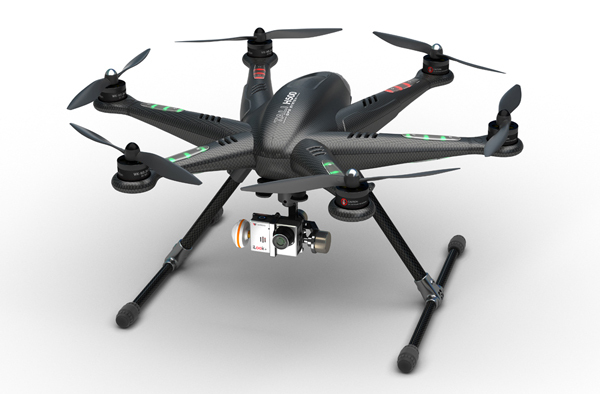
The Tali H500 looks aggressive, sleek and just draws you in as soon as you see it. Unfortunately, that seems to be all Walkera was focused on when they designed it. It comes in either white or carbon fiber. I opted for the carbon fiber, as it gives it that stealthy look. If I remember correctly, the carbon fiber color was only available in the United States. It’s a hexacopter sporting 8″ propellers, GPS positioning, a 3 axis gimbal carrying Walkera’s GoPro clone (the iLook +) and a HUGE 6s LiPo battery. The Devo F12E radio includes a full color screen, integrating the 5.8 GHz
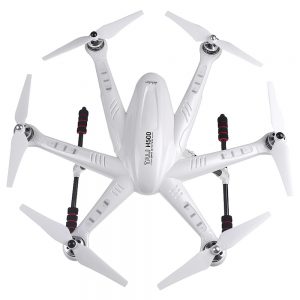
video from the Tali into the controller itself without the need for an additional tablet or cell phone. The going price at the time I purchased mine was $1800, including a spare battery and carrying case.
Right out of the box, mine had problems. The gimbal would not power on. I initially thought I had a defective gimbal, but after testing the gimbal alone with an external power supply, it was fine. I found that there was no voltage at the “complex port” the gimbal connected to on the Tali itself. A little more investigation revealed a cold solder joint. Walkera is FAMOUS for cold solder joints and soldering issues in general. I have seen images shared on Walkera forums where connectors were popped into circuit boards and the first drop of solder was not added to hold it in place. I’m talking main wiring harnesses in flight controllers here. I fired up my soldering iron, fixed the issue and moved on.
I took it outside for its maiden voyage. Calibration procedures were pretty easy. Spin the craft in circles to calibrate the compass, wait for the lights to blink, good to go. I took off, flew it around a bit about 15 feet off the ground, then switched into GPS mode. It immediately began to “toilet bowl”. For those unfamiliar with the term, when a GPS positioning system on a drone does not have a good lock on where it is, it will fly in larger and larger circles until it locks in on satellites and magnetic north. Before I could recover mine, it spun itself into the dirt at full speed. The shell and one landing gear was destroyed. I was already off to order replacement parts.
These issues are not localized to just me. The Tali owners group on Facebook, which has now become stagnant and a place where people just bad mouth the craft, is full of descriptions of the same encounter. We would all share our stories there and compare notes. It was clear there were issues with the firmware on the flight controller. We would hold out for an upgrade. The upgrades rarely made the issues better. One upgrade made the issues much, much worse, causing the group to scramble for downgrades. Eventually, people just started tearing out the stock flight controller and installing the DJI Naza controllers. A whole new FB group dedicated to those who had abandoned the original controller was born from those who decided to go that route. Most of them reported they were no longer afraid to fly their Tali after making the switch.
There were a number of hardware issues that caused major problems with the Tali as well. They included:
Landing Gear Retract Servos:
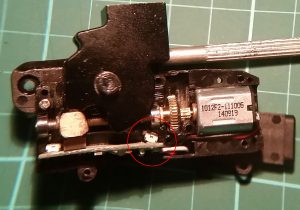
There was a major design flaw in these. At the end of the travel on each side, a surface mount micro switch was used to stop the travel of the landing gear as it reached its up or down position. A brass block on the threaded screw makes contact with the switch at each end. The problem was, the retract speed on the landing gear was rather fast. The servo would overshoot the stop sometimes, tearing the micro switch from the circuit board. The servo would immediately stop working in whatever position it happened to fail in. If it was up, you had to try to land the copter on its belly or on one leg. The other issue, which was much more troubling, was that at times, the broken switch would short out, causing a system-wide power drain. On more than one occasion, these shorted retract servos have sent the Tali falling from the sky under low power. There was a “cushion mod” that a few people, including myself, did that consisted of adding a little piece of foam to the micro switch to soften the approach of the stop. It was a band-aid at best. The other solution was to slow down the motion of the landing gear using some settings in the radio.
Battery Connector:
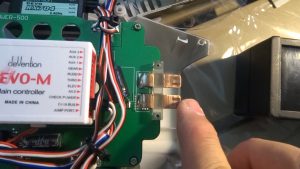
If you look inside the rear of the Tali at the battery connector, you’ll notice it’s just a pair of metal tabs hanging off of a circuit board. These weren’t attached by a lot. If you misaligned you’re battery a little while inserting it, you ran the risk of bending or breaking these off. Adding some hot glue to the circuit board helped to strengthen the connection.
ESC Wires:
The ESC wires running from the ESC to the motors are very small gauge. They rarely used enough solder to hold them in place and the “glue” they added to strengthen the connection was rarely even in the correct place, if there at all. These are famous for breaking during flight, causing motor failure and crashes. Vibration is a real problem with the Tali, so these wires WILL fail if more glue is not added to these connections.
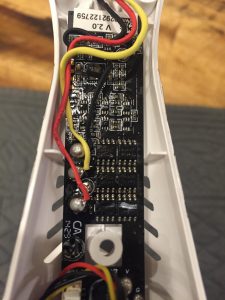
Wimpy Arms:
 As I stated before, Walkera was more interested in now cool the Tali looked than they were its functionality. The arms on the Tali are not very strong. If you grab and twist, you can almost get the propellers a full 45 degrees from level. They flex way too much and cause a ton of vibration. This vibration is transferred through to other parts of the craft causing broken wires, loose motor mounts and a number of other issues. A few folks have piled a ton of hot glue in the arms to strengthen them, but the cost was a ton of weight added. The popular fix seemed to be to add some aluminum tape to the arms to give them just a bit more strength and reduce vibration. That’s the method I chose.
As I stated before, Walkera was more interested in now cool the Tali looked than they were its functionality. The arms on the Tali are not very strong. If you grab and twist, you can almost get the propellers a full 45 degrees from level. They flex way too much and cause a ton of vibration. This vibration is transferred through to other parts of the craft causing broken wires, loose motor mounts and a number of other issues. A few folks have piled a ton of hot glue in the arms to strengthen them, but the cost was a ton of weight added. The popular fix seemed to be to add some aluminum tape to the arms to give them just a bit more strength and reduce vibration. That’s the method I chose.
Soldering Issues:
I mentioned this before, too. There’s not enough solder on almost everything. The big ones are the power wires for the ESCs and the motor wires, but there can be other places as well. The best thing you can do as soon as you get one is check the soldering on all connections and add hot glue over all solder joints that will be subject to vibrations.
The Tali is definitely a problematic drone. You can buy one now for just a few hundred dollars. Occasionally someone will pop into the Tali Owners FB group with one for sale. Sadly they typically get made fun of. I’m not sure why the haters even remain in that group. You can make the Tali into an “okay” craft, but it requires a ton of mods right out of the box. If you’re thinking about getting one, do not fly one without the mods. Don’t “get around to it”. Do them immediately. It’s just not safe otherwise. To this day I don’t really trust mine. I’ve had it way up in the air and landed with zero problems. It flies fine in “stabilize” mode (no GPS). When it comes to GPS, you want to be sure to power on your Tali where it will be taking off from and leave it there for three minutes to obtain satellite locks before taking off. If you don’t, it will go buck wild when you flip that GPS switch. Do not move it while it’s locking down. Do not let it lock down, then move it somewhere else to take off. Power it on, leave it there, then take off. Grounding the copper shield covering the GPS puck is also a good idea to keep things safe.
As these copters age, they’re getting harder to find parts for, too. The batteries are an odd size. You don’t see a lot of drones running 6s batteries out there. A few folks have tried to find an aftermarket 6s battery that will fit inside the Tali’s housing, but haven’t had much luck. There’s nothing particularly special about the Tali’s battery. It’s a battery with a fancy power switch and a life monitor on the back. It’s not a “smart battery” like the newer DJI drones use, so any old battery should do, as long as it fits. That has been the problem. The other kind of shady thing that has turned me off from Walkera is the way they label their batteries. Naturally, LiPo batteries are considered hazmat. Once you get over 3s, it gets more expensive to ship them into the United States. Every Wakera battery I have purchased for my Tali has been labeled “3s 11.1v” even though it is absolutely a 6s battery. This is nothing more than a flat out lie to get around having to pay the fees to do business in the Unites States. In my opinion, a reputable company would not do that.
The takeaway from this should be that the Walkera Tali H500 is not a “take it out of the box and go fly” kind of drone. It needs A LOT of work to make it air worthy. If you want to spend the money on one, make sure you account for the money and time you’ll spend on the necessary modifications. If you still want one, good luck and happy flying!
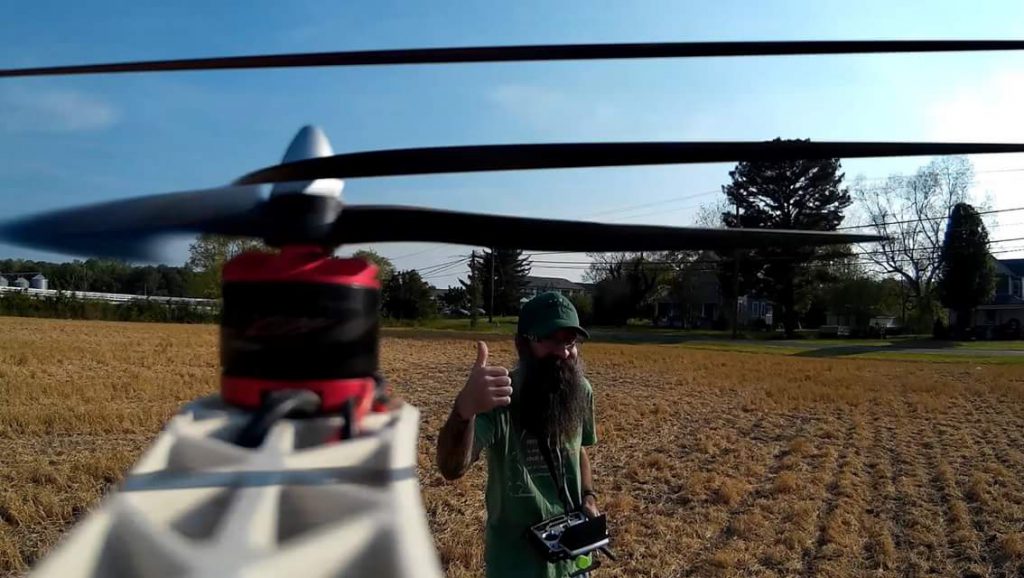
Thank You Jim really helpfull
You call it a drone. What happened to UAV?
This one is capable of fully autonomous flight with the right software.